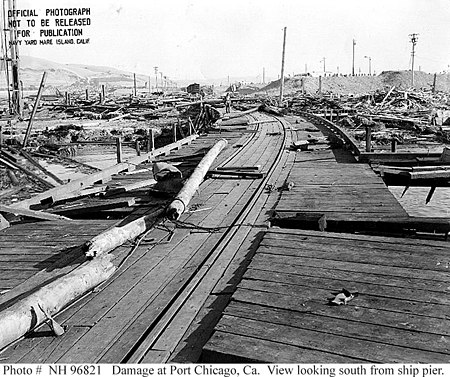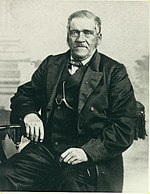Port Chicago disaster

The Port Chicago disaster was a deadly munitions explosion of the ship SS E. A. Bryan on July 17, 1944, at the Port Chicago Naval Magazine in Port Chicago, California, United States. Munitions while being loaded onto a cargo vessel bound for the Pacific Theater of Operations, detonated killing 320 sailors and civilians and injuring 390 others. Two-thirds of the dead and injured were enlisted African American sailors. A month later, the unsafe conditions prompted hundreds of servicemen to refuse to load munitions, an act known as the Port Chicago Mutiny. Fifty men—called the "Port Chicago 50"—were convicted of mutiny and sentenced to 15 years of prison and hard labor, as well as a dishonorable discharge. Forty-seven of the 50 were released in January 1946; the remaining three served additional months in prison. During and after the mutiny court-martial, questions were raised about the fairness and legality of the proceedings. Owing to public pressure, the United States Navy reconvened the courts-martial board in 1945—that board re-affirmed convictions. Widespread publicity surrounding the case turned it into a cause célèbre among Americans opposing discrimination targeting African Americans; it and other race-related Navy protests of 1944–45 led the Navy to change its practices and initiate the desegregation of its forces beginning in February 1946. In 1994, the Port Chicago Naval Magazine National Memorial was dedicated to the lives lost in the disaster.
Excerpt from the Wikipedia article Port Chicago disaster (License: CC BY-SA 3.0, Authors, Images).Port Chicago disaster
Kinney Boulevard,
Geographical coordinates (GPS) Address Website Nearby Places Show on map
Geographical coordinates (GPS)
| Latitude | Longitude |
|---|---|
| N 38.0575 ° | E -122.02972222222 ° |
Address
Port Chicago Naval Magazine National Memorial
Kinney Boulevard
California, United States
Open on Google Maps








